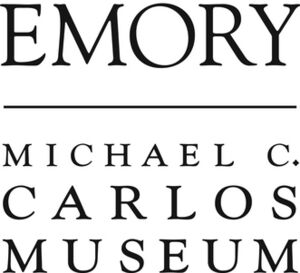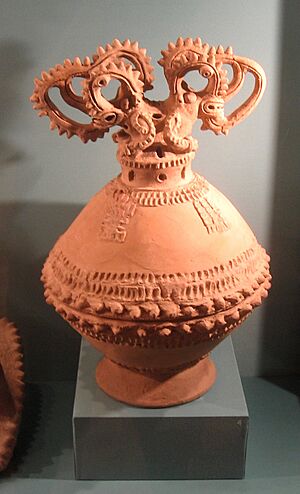Michael C. Carlos Museum facts for kids
 |
|
 |
|
| Former name | Emory University Museum of Art and Archaeology |
|---|---|
| Established | 1876 |
| Location | 571 South Kilgo Circle Atlanta United States |
| Type | Art museum |
| Visitors | 120,000 annually |
The Michael C. Carlos Museum is a cool art museum in Atlanta, Georgia. It's right on the main campus of Emory University. This museum holds the biggest collection of ancient art in the Southeast United States! You can see amazing things from ancient Egypt, Greece, Rome, the Near East, Africa, and the ancient Americas. All these treasures are kept in a special building designed by Michael Graves and are open for everyone to visit.
Contents
The Museum's Story
The Carlos Museum is one of the oldest museums in Georgia. Its history goes all the way back to 1876. That's when the Emory College Museum first opened on Emory University's original campus in Oxford, Georgia.
When the university moved to Atlanta, a group of professors officially started the Emory University Museum in 1919. For many years, the collections were shown in different buildings around the campus.
A New Home for Art
A kind businessman from Atlanta, Michael C. Carlos, gave over $20 million to help build a permanent home for the museum. This new building opened in 1985. The museum was then called the Emory University Museum of Art and Archaeology. It became officially recognized as a museum of ancient and fine arts.
In 1993, the museum got even bigger! This expansion made it one of Atlanta's most important art places. When the new building opened, the museum was renamed the Michael C. Carlos Museum. This was to honor Michael C. Carlos, who had been so generous.
Special Exhibitions
During the 1996 Summer Olympics held in Atlanta, the museum hosted two big art shows. One show was on the Emory campus. The other, called "Souls Grown Deep: African American Vernacular Art of the South," was at City Hall East. This exhibit showed amazing folk art and art by self-taught African-American artists from the American South. It received wonderful reviews!
New Leadership
In June 2022, Henry Kim became the new director of the museum. He started his role on August 22, 2022.
What You Can See and Do
The museum has more than 25,000 pieces of art! About 120,000 people visit the museum every year. Besides its regular and special art shows, the museum offers many educational programs. These include talks, workshops, performances, and fun festivals.
The Carlos Museum also has a special lab for teaching and preserving old artworks. It even publishes books about its collections. The museum helps bring art, history, and archaeology to kids in Georgia through its "Art Odyssey" program. There's also "Odyssey Online," a website for school-aged children to learn about the different cultures in the museum's collections.
Amazing Ancient Collections
The museum's collection of ancient Egyptian art grew a lot in 1999. It bought 145 items from Canada's Niagara Falls Museum. The beautifully decorated ancient coffins and mummies of both people and animals are a main highlight of the Egyptian art exhibit.
Also in 1999, Michael C. Carlos gave another $10 million just for buying ancient Greek and Roman art. Because of this, the museum now has a fantastic portrait of the Roman emperor Tiberius. It also has one of the best examples of ancient Greek sculpture in the country. This sculpture shows Terpsichore, the Greek muse of dance. Today, 450 works of art are displayed in the Greek and Roman art galleries.
The Mystery of Ramesses I
In 1999, the Carlos Museum bought an unknown male mummy. Some people thought it might be an ancient Egyptian pharaoh from the New Kingdom. Working with medical experts from Emory University, museum scholars studied the mummy. They were able to figure out that it was indeed pharaoh Ramesses I!
In 2003, the museum returned the mummy to Egypt. This was a gift to show friendship and cultural cooperation between countries. Ramesses I's remains are now on display in a special case at the Luxor Museum in Egypt.
Finding a Lost Head
On June 6, 2006, the museum bought a statue of Venus that was missing its head. It cost $968,000 at an auction in New York. A private collector in Houston, Texas, agreed to sell the head to whoever bought the body. The head had last been seen with the body in 1836. The museum bought the head for an extra $50,000, bringing the statue back together!


